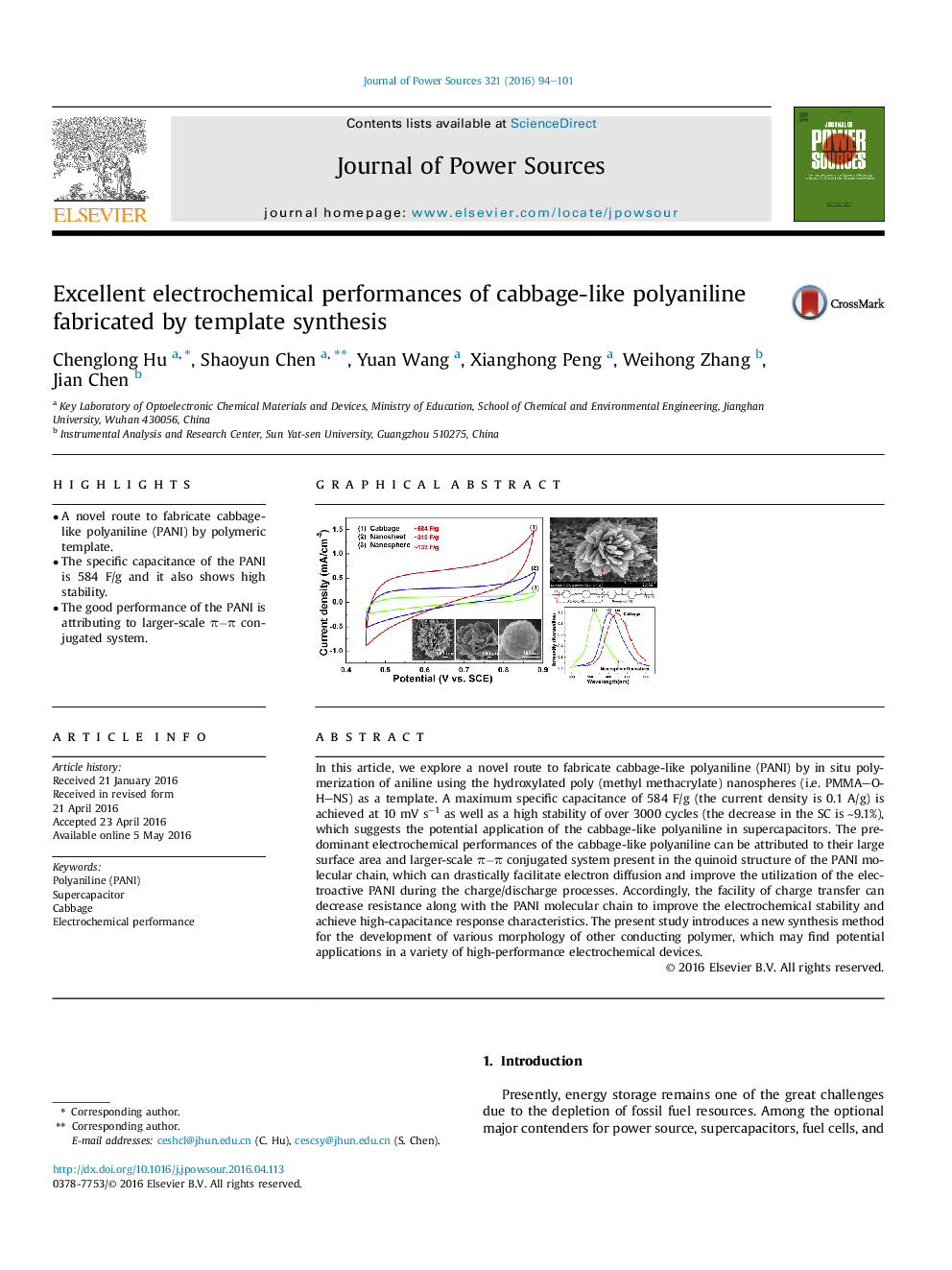| Article ID | Journal | Published Year | Pages | File Type |
|---|---|---|---|---|
| 1291782 | Journal of Power Sources | 2016 | 8 Pages |
•A novel route to fabricate cabbage-like polyaniline (PANI) by polymeric template.•The specific capacitance of the PANI is 584 F/g and it also shows high stability.•The good performance of the PANI is attributing to larger-scale π−π conjugated system.
In this article, we explore a novel route to fabricate cabbage-like polyaniline (PANI) by in situ polymerization of aniline using the hydroxylated poly (methyl methacrylate) nanospheres (i.e. PMMAOHNS) as a template. A maximum specific capacitance of 584 F/g (the current density is 0.1 A/g) is achieved at 10 mV s−1 as well as a high stability of over 3000 cycles (the decrease in the SC is ∼9.1%), which suggests the potential application of the cabbage-like polyaniline in supercapacitors. The predominant electrochemical performances of the cabbage-like polyaniline can be attributed to their large surface area and larger-scale π−π conjugated system present in the quinoid structure of the PANI molecular chain, which can drastically facilitate electron diffusion and improve the utilization of the electroactive PANI during the charge/discharge processes. Accordingly, the facility of charge transfer can decrease resistance along with the PANI molecular chain to improve the electrochemical stability and achieve high-capacitance response characteristics. The present study introduces a new synthesis method for the development of various morphology of other conducting polymer, which may find potential applications in a variety of high-performance electrochemical devices.
Graphical abstractA novel route to fabricate cabbage-like polyaniline by in situ polymerization of aniline using the hydroxylated poly (methyl methacrylate) nanospheres (i.e. PMMAOHNS) as a template. A maximum specific capacitance of 584 F/g was achieved at 10 mV s−1 as well as a high stability of over 3000 cycles. The predominant electrochemical performances of the cabbage-like polyaniline could be attributed to their large surface area and larger-scale π−π conjugated system present in the quinoid structure of the PANI molecular chain.Figure optionsDownload full-size imageDownload as PowerPoint slide
